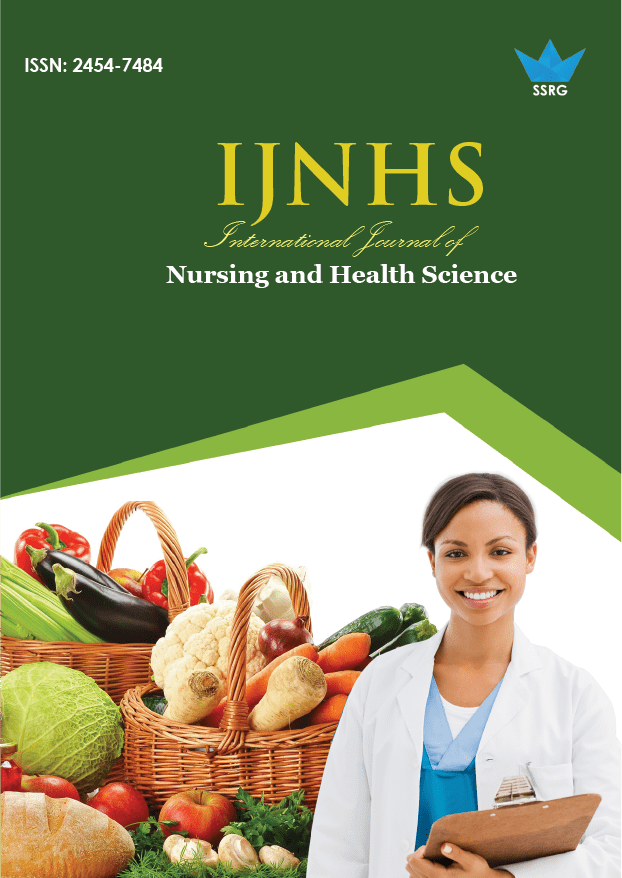The Disaster Workforce: Tales from the Trench a Discursive paper on Missionaries, Mercenaries and Misfits in the field

| International Journal of Nursing and Health Science |
| © 2021 by SSRG - IJNHS Journal |
| Volume 7 Issue 1 |
| Year of Publication : 2021 |
| Authors : Joanne Louise Harding |
How to Cite?
Joanne Louise Harding, "The Disaster Workforce: Tales from the Trench a Discursive paper on Missionaries, Mercenaries and Misfits in the field," SSRG International Journal of Nursing and Health Science, vol. 7, no. 1, pp. 15-19, 2021. Crossref, https://doi.org/10.14445/24547484/IJNHS-V7I1P104
Abstract:
A. Aims: The aim of this discursive article is to discuss the often-unreported issue of the lack of standardization of health care recruitment and competence in the workplace with health care professionals in the disaster environment whilst looking at the individuals it attracts. This will be taken from my personal experiences throughout my career and supported by the available literature.
B. Background: The Frequency of disasters is on the increase. With the surge of disaster response and disaster relief deployed by countries wanting to help, there must be a sufficient specialized workforce ready to respond. The inadequate and lack of standardization in the recruitment of healthcare professionals in disaster response is seen repeatedly, with evidence showing incompetent, undertrained, prepared, and unsuitable healthcare workers continuing to be deployed. Which increases risk, decreases continuation of care, and works against what we are used to in first-world countries. Of course, a disaster is not an everyday occurrence and will be different, but there need to be a “middle ground” and standards met regardless.
C. Design: This discursive paper is based on my experience and training in disaster settings as both a military and civilian nurse. It also critically analyses and highlights a gap in the literature around evidence-based recruitment of healthcare professionals in disasters.
D. Method: My personal experience identifies the problems of the workforce personnel and recruitment process in disaster. Pub Med and CIANAHL databases were utilized for the literature search.
E. Conclusion: The need for education, training, preparation, support, and standardization in disaster and the recruitment for disasters is explored in this paper and highlighted as an area that needs to be developed further, whilst highlighting the need for further research to be undertaken in these fields.
Keywords:
disaster, disaster nursing, disaster recruitment, disasters nurse competencies, standardization, recruitment, specialized, organization, Non-Government Organisation (NGO).
References:
[1] Achora S. and Kamanyire J.K., Disaster Preparedness. Need for inclusion in undergraduate nursing education Sultan Qaboos University Medical Journal, https://www.ncbi.nlm.nih.gov/pmc/articles/PMC4746037/., 16 (1)(2016).
[2] Chambers R, Rural Development: Putting the Last First. Longman Scientific and Technical, UK., (1983).
[3] Gayle D., Timeline: Oxfam sexual exploitation scandal in Haiti The Guardian https://www.theguardian.com/world/2018/jun/15/timeline-oxfam-sexual-exploitation-scandal-in-haiti., (2018).
[4] Harthi MA, Thobaity AA, Ahmari WA., and Almalki M., Challenges for Nurses in Disaster Management: A scoping Review https://www.dovepress.com/challenges-for-nurses-in-disaster-management-a-scoping-reviewpeer-reviewed-article-RMHP., (2020).
[5] Labrague LJ. Hammad K., Gloe DS., McEnroe-Petitte DM., Fronda DC., Obeidat AA., Leocadio MC., Cayaban AR. And Mirafuentes EC. (2017) Disaster preparedness among nurses: a systematic review of literature 65(1) (2017) 41-53 https://onlinelibrary.wiley.com/doi/full/10.1111/inr.12369
[6] Madhouse., War-Zone Tourism: Thinking Beyond Voyeurism and Danger: An International Journal for Critical Geographies, 15(2) (2016) 330-345
[7] McGowan D.M., Not All Disasters Are the Same: Understanding Similarities and Differences https://doi.org/https://doi.org/10.1016/B978-0-12-803638-9.00006-9 (2017).
[8] Muriuki DW. (2020) Contribution of NGOs in Complex Emergencies. https://www.who.int/hac
[9] Naushad VA. Bierens J., Purayil NK., Firjeet CP., Mohammad OS., Maliyakkal A., Chalihadan S. & Schreiber MD., A Systemic Review of the Impact of Disaster on the Mental Health of Medical Responders Prehospital and disaster medicine: The official journal of the National Association of EMS Physicians and the World Association for Emergency and Disaster Medicine in association with the Acute Care Foundation 34(6)(2019) 1-12 https://www.researchgate.net/publication/336652400_A_Systematic_Review_of_the_Impact_of_Disaster_on_the_Mental_Health_of_Medical_Responders
[10] Schulz S., Desire for the desert: racializing white teachers motives for working in remote schools in the Australian desert https://www.tandfonline.com/doi/abs/10.1080/13613324.2015.1110296?src=recsys&journalCode=cree20 [11] Stirrat., Mercenaries, Missionaries and Misfits Representations of Development Personnel Citique of Anthropology 28(4) (2008) 406-425
[12] https://www.researchgate.net/publication/258129820_Mercenaries_Missionaries_and_Misfits_Representations_of_Development_Personnel
[13] Taylor EB., Missionaries, Mercenaries and Misfits Foreigners in Haiti https://popanth.com/article/missionaries-mercenaries-and-misfits-foreigners-in-haiti.
[14] Thobaity AA., Plummer V., and Williams B ., What are the most common domains of the core cmpetencies of disaster nursing? A scoping review 31 (2017) 64-71 https://pubmed.ncbi.nlm.nih.gov/28029612/
[15] US Department of Health and Human Services., Public Health Emergency https://www.phe.gov/Preparedness/news/events/NPM18/Pages/help.aspx., (2018).

 10.14445/24547484/IJNHS-V7I1P104
10.14445/24547484/IJNHS-V7I1P104